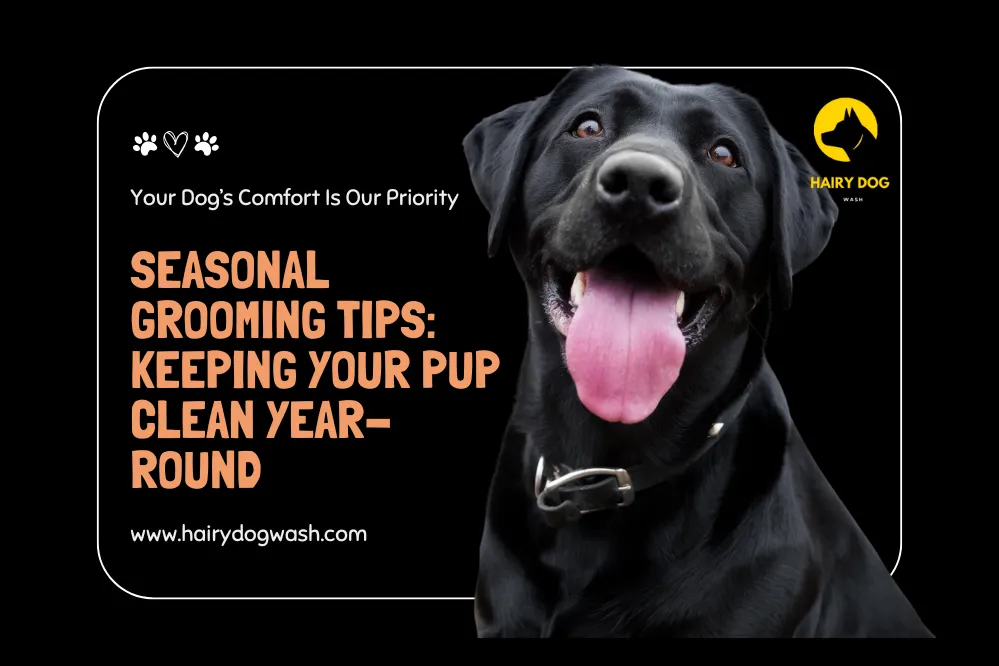As a dog owner, it’s essential to understand that grooming is not just about aesthetics; it’s an integral part of your dog’s overall health. While many people associate grooming with a good-looking dog, the true benefits extend far beyond a shiny coat.
Grooming contributes to your dog’s comfort, cleanliness, and well-being. One aspect that often goes overlooked is the impact that different seasons have on your dog’s grooming needs. Just like humans adjust their wardrobes to accommodate seasonal changes, your dog’s grooming routine should be modified to suit the weather and environmental factors.
In this blog post, we will explore seasonal grooming tips to ensure your pup stays clean, comfortable, and healthy throughout the year. Whether it’s shedding season in the spring or keeping your dog warm and safe during the harsh winter months, we’ll walk you through the key grooming tasks that change with the seasons. By following these tips, you can create a grooming routine that addresses your dog’s needs, no matter the weather outside.
Spring Grooming: Preparing for Shedding Season
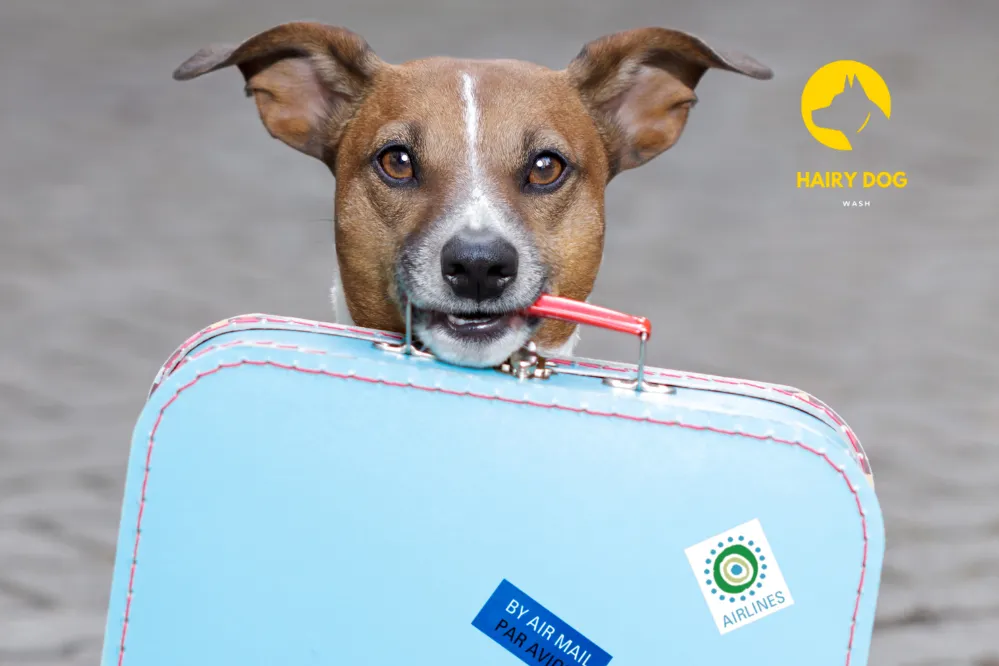
Spring is a time of renewal, but it’s also the start of shedding season for many dogs. As the weather warms up, dogs naturally begin to shed their winter coats. This process helps regulate their body temperature and prepare for the warmer months. However, it can also lead to a significant increase in hair around your home. To keep your dog clean and comfortable during this transition, here are some key grooming tips for spring:
- Brush Regularly
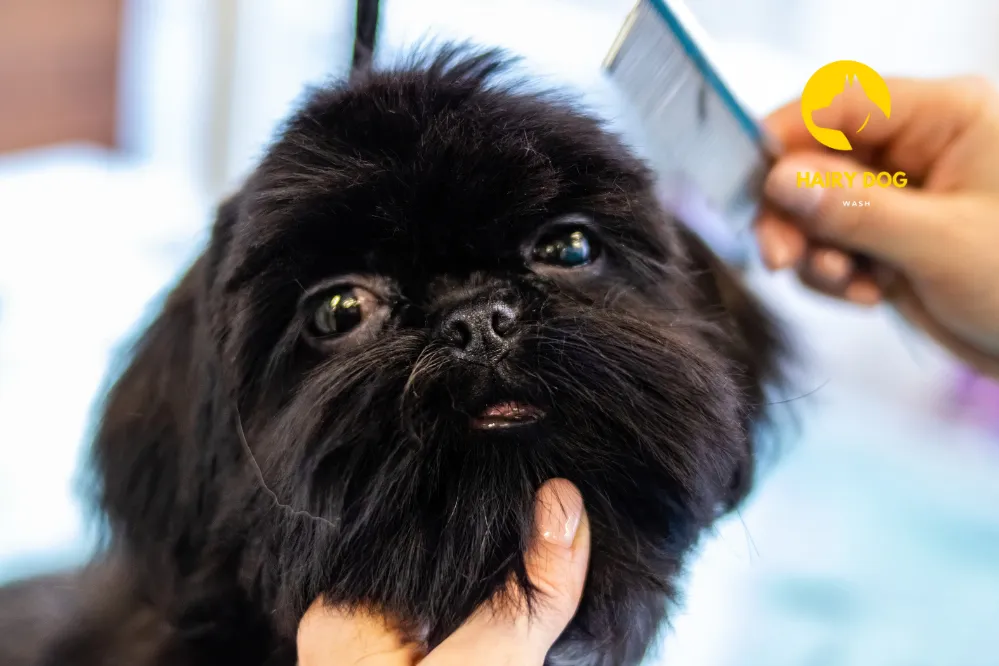
During spring, brushing is a must. Brushing helps remove loose hair, preventing it from becoming tangled or matted. It also reduces shedding by catching fur before it falls off, making cleanup easier for you.
The type of brush you use will depend on your dog’s coat. For dogs with long or thick fur, use a slicker brush or undercoat rake to reach the dense layers of hair. For shorter-haired dogs, a rubber grooming brush or bristle brush should suffice. Brushing also helps stimulate the skin and promote healthy hair growth.
- Bathe More Often
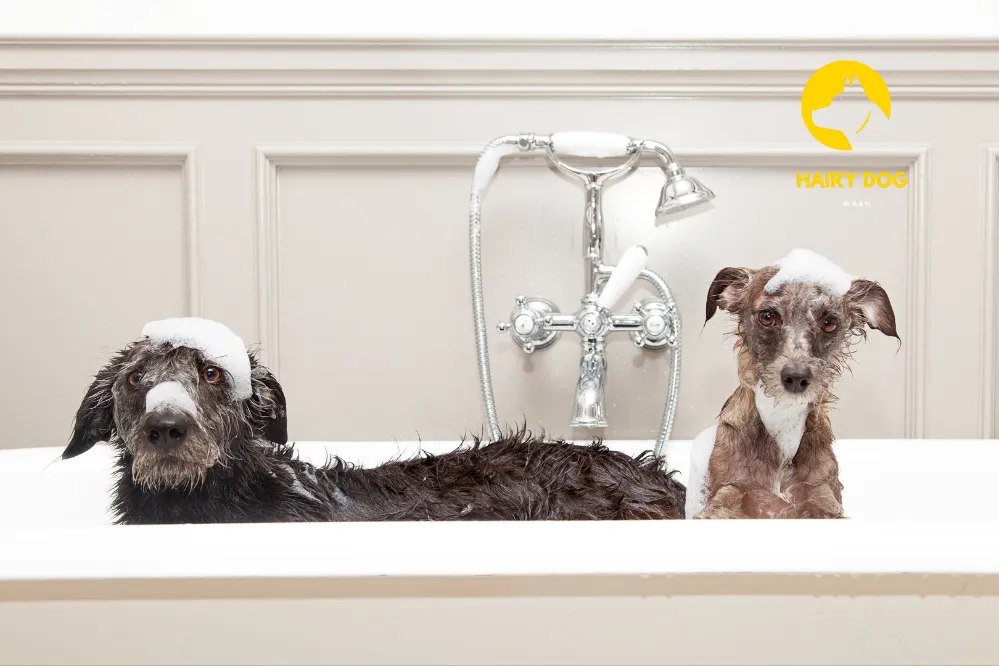
In the spring, your dog may spend more time outdoors, and with all the shedding, it’s a good idea to bathe them more frequently. Regular baths will help remove loose hair, dirt, and debris. Be sure to use a gentle dog-specific shampoo that suits your dog’s skin type to avoid drying out their coat.
If your dog has a thick double coat, be aware that it may take longer for the hair to dry, so make sure to dry them thoroughly after each bath to avoid matting.
- Trim Nails Regularly
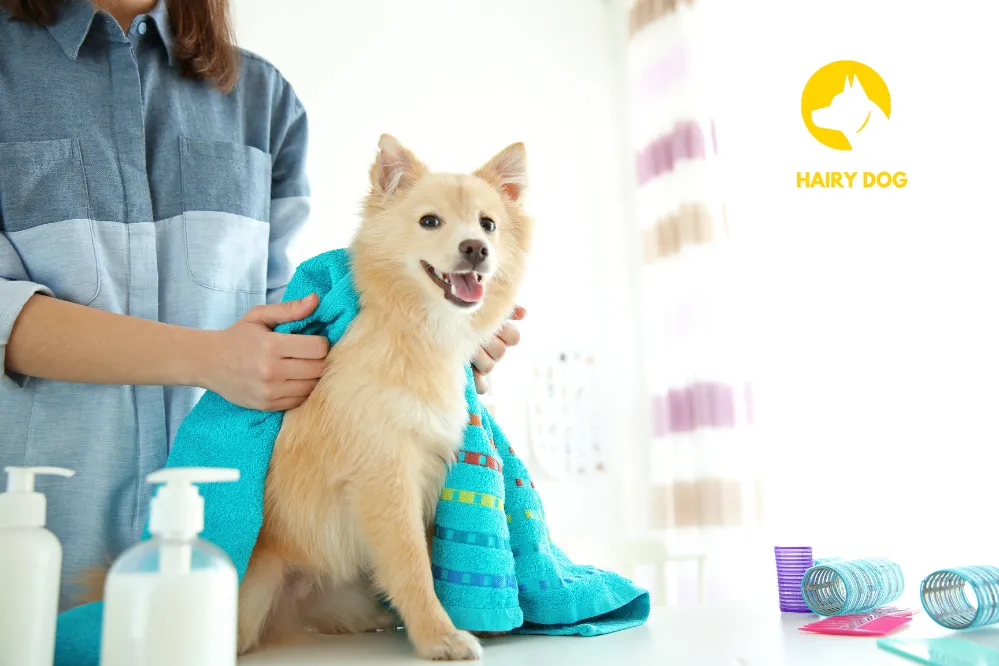
With more outdoor activities in the spring, your dog’s nails are likely to wear down naturally, but it’s still important to trim their nails regularly. Long nails can cause discomfort and even lead to joint issues. Regular trimming will keep your dog’s paws healthy and prevent injury.
- Check for Fleas and Ticks
Spring brings an increase in outdoor activities, and with it, a rise in flea and tick activity. Make sure to check your dog’s coat for these pests regularly. Fleas can cause itching and discomfort, while ticks can transmit serious diseases. Regular grooming sessions allow you to spot these pests early and take necessary measures to remove them.
- Check for Allergies
As plants bloom in the spring, allergies can become an issue for many dogs. Pollen, dust, and grass can irritate your dog’s skin and eyes, leading to itching and discomfort. Keep an eye out for signs of allergies such as excessive scratching, red eyes, or inflamed skin. Regular grooming helps you spot these issues early, so you can take the necessary steps to help your dog feel better.
Summer Grooming: Keeping Your Dog Cool and Comfortable
Summer can be a challenging season for dogs, especially in hot climates. Heat and humidity can take a toll on your dog’s coat and skin. Grooming during the summer months is crucial for keeping your dog cool, comfortable, and free from skin issues. Here are some summer grooming tips to follow:
- She or Trim Long Coats
If you have a dog with a long or thick coat, consider trimming or shaving it during the summer. While shaving isn’t appropriate for all breeds (like double-coated dogs), a trim can help reduce the amount of heat your dog retains. Make sure to ask your groomer for advice on the best haircut for your dog’s breed. Never shave a double-coated dog, as this can compromise their natural insulation and lead to sunburn.
- Bath More Frequently
Summer means more outdoor time, and with that comes more dirt, dust, and sweat. It’s important to bathe your dog more frequently during the summer months to keep them clean and fresh. Use a gentle, hydrating shampoo to keep your dog’s skin moisturized. Pay attention to areas that tend to accumulate dirt, such as the paws and belly.
- Check for Hot Spots
Hot spots are irritated areas of the skin that can develop when your dog’s skin becomes moist, often due to the heat and humidity of summer. These spots can quickly become infected, so it’s essential to check your dog’s skin regularly. If you notice any redness, sores, or hair loss, it’s important to clean the area and seek veterinary care if needed. Regular grooming helps you catch these issues early.
- Protect Against Sunburn
While it might seem like a dog’s fur is enough protection from the sun, certain areas of your dog’s body—like the nose, ears, and belly—are still susceptible to sunburn. Use a pet-safe sunscreen on these areas, especially if your dog has a light-colored coat. Grooming can help you keep an eye on these sensitive spots and ensure they’re protected during sunny days.
- Hydrate and Stay Cool
During hot summer days, always ensure your dog has access to fresh water and shaded areas to rest. After outdoor activities, check your dog’s paws for any cracks or irritation from hot pavement. Grooming also helps you keep your dog’s paws clean, reducing the likelihood of heat-related injuries.
Fall Grooming: Preparing for the Cold Weather
Fall is a transitional season, and as temperatures start to drop, your dog’s grooming routine will need to adjust accordingly. As you prepare for the cooler months, here are some grooming tips for the fall season:
- Brush Regularly to Prevent Mats
As the weather cools down, your dog’s coat may begin to thicken in preparation for winter. Long-haired dogs are especially prone to matting, which can be painful if left untreated. Regular brushing during the fall will help prevent mats from forming and will ensure your dog’s coat remains tangle-free. Pay extra attention to areas that are prone to matting, such as behind the ears and under the legs.
- Check for Dry Skin
The transition from summer to fall can be tough on your dog’s skin. The drier air and cooler temperatures can lead to flaky or dry skin, especially in breeds with sensitive skin. Regular grooming and moisturizing treatments can help keep your dog’s skin healthy. Consider using a dog-safe moisturizing shampoo or conditioner to keep their coat shiny and their skin hydrated.
- Trim Nails and Hair Around the Paws
As the temperature drops, your dog may spend more time outdoors, and the cold weather can cause ice or snow to accumulate on their paws. Trim the hair around the paws to prevent ice balls from forming. Additionally, keep their nails trimmed to ensure they don’t get too long and cause discomfort during walks.
- Monitor for Fleas and Ticks
While fleas and ticks are more common in the warmer months, they can still be a problem in the fall. Many dogs enjoy the crisp air of autumn, but this can also expose them to fleas and ticks. Continue checking your dog’s coat regularly for pests, especially after walks in wooded or grassy areas.
Winter Grooming: Keeping Your Dog Warm and Safe
Winter presents unique challenges when it comes to grooming your dog. The cold temperatures, snow, and ice can cause dryness, irritation, and discomfort for your dog. Here are some grooming tips for keeping your dog clean, comfortable, and protected during the winter months:
- Protect Your Dog’s Coat from Salt and Ice
During winter, roads and sidewalks are often treated with salt and other chemicals to prevent ice buildup. These substances can be harsh on your dog’s paws and coat. After walks, wipe your dog’s paws with a damp cloth to remove any salt or chemicals. You can also use a paw balm to protect your dog’s paws from cracking.
- Brush Regularly to Remove Dead Hair
Even in winter, regular brushing is important. Brushing helps remove any dead hair and prevents mats from forming. If your dog has a thick coat, brushing is essential to ensure that their coat stays warm and functional. Mats can trap moisture, which can make your dog colder and uncomfortable. Brushing also helps stimulate blood circulation and keep their skin healthy.
- Keep Your Dog Warm with Proper Grooming
If your dog has a long coat, make sure it is trimmed to avoid excessive length that can cause discomfort or dragging in the snow. Some dogs may benefit from wearing a winter coat to provide extra warmth during walks. A clean, well-groomed dog will have a better chance of retaining body heat and staying comfortable in cold weather.
- Hydrate and Moisturize
Winter can be harsh on your dog’s skin, leading to dryness and flakiness. Make sure your dog has access to fresh water, as dehydration can occur in winter just as much as in summer. You may also want to apply a dog-safe moisturizer to your dog’s skin to keep it hydrated.
Conclusion
Grooming your dog is an essential part of responsible pet ownership, and it’s crucial to adapt your grooming routine to suit the seasons. From shedding and allergies in the spring to salt and dryness in the winter, seasonal grooming ensures that your dog stays clean, healthy, and comfortable year-round. By paying attention to your dog’s grooming needs and adjusting your routine according to the weather, you can help them feel their best no matter the season.

